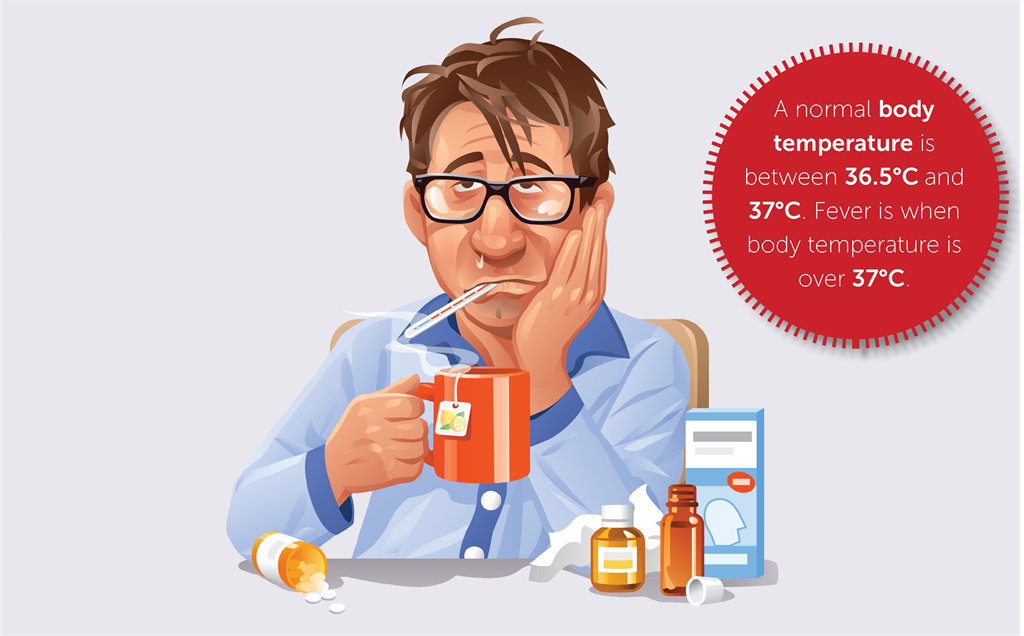- Fever is when your body temperature rises above 37°C.
- Fever has many possible causes e.g. infection, dehydration, and allergic reaction.
- In adults, the level of temperature generally reflects the severity of the illness. In babies and young children, even a small
change in temperature may be cause for concern. - Get medical help if a fever is accompanied by other symptoms like pain and vomitting.

What is a fever?
In an adult, the level of fever generally mirrors the severity of the illness causing it. In a child, this is not necessarily the case. A child with a mild cold may have a temperature of 40°C, while a child with a serious illness, like bacterial pneumonia may have a temperature lower than that. In a newborn, the body's temperature control is not yet well developed. Signs other than a fever, e.g. poor appetite, lethargy, irritability, may signal an infection. A fever can be caused by dehydration, overexertion, mosquito bites, bee stings, allergic reactions, and viral or bacterial infections.
Drugs to lower fever
Paracetamol can help lower a fever. Paracetamol is also an analgesic (pain reliever), so it can ease the discomfort and body
aches that often come with a fever. In excessive amounts, this drug can cause liver damage, so be careful not to exceed the
correct dosage. Ibuprofen is another fever-reducing medication for mild to moderate aches and pains. It is available in liquid or
pill form. Follow the dosage directions on the product label. Don’t give ibuprofen to infants younger than six months.
Do not give aspirin to a child or teenager with fever. Many fevers are caused by viral infections, and the combination of aspirin
and viral illness has been linked to the development of Reye’s syndrome, a very dangerous liver disease.

First aid for fever
1. Take paracetamol to reduce a fever of 40 degrees or higher. Do not use or give this medication in higher doses or more frequently than directed.
2. Encourage the person to drink plenty of water.
3. For a temperature above 40 degrees, bathe or sponge the skin with lukewarm (not cold water). Fan the person at the same time to improve the cooling effect of evaporation.
4. Remove extra layers of clothing.
5. Encourage the person to rest.
We live in a world where facts and fiction get blurred
Who we choose to trust can have a profound impact on our lives. Join thousands of devoted South Africans who look to News24 to bring them news they can trust every day. As we celebrate 25 years, become a News24 subscriber as we strive to keep you informed, inspired and empowered.






 Publications
Publications
 Partners
Partners

















